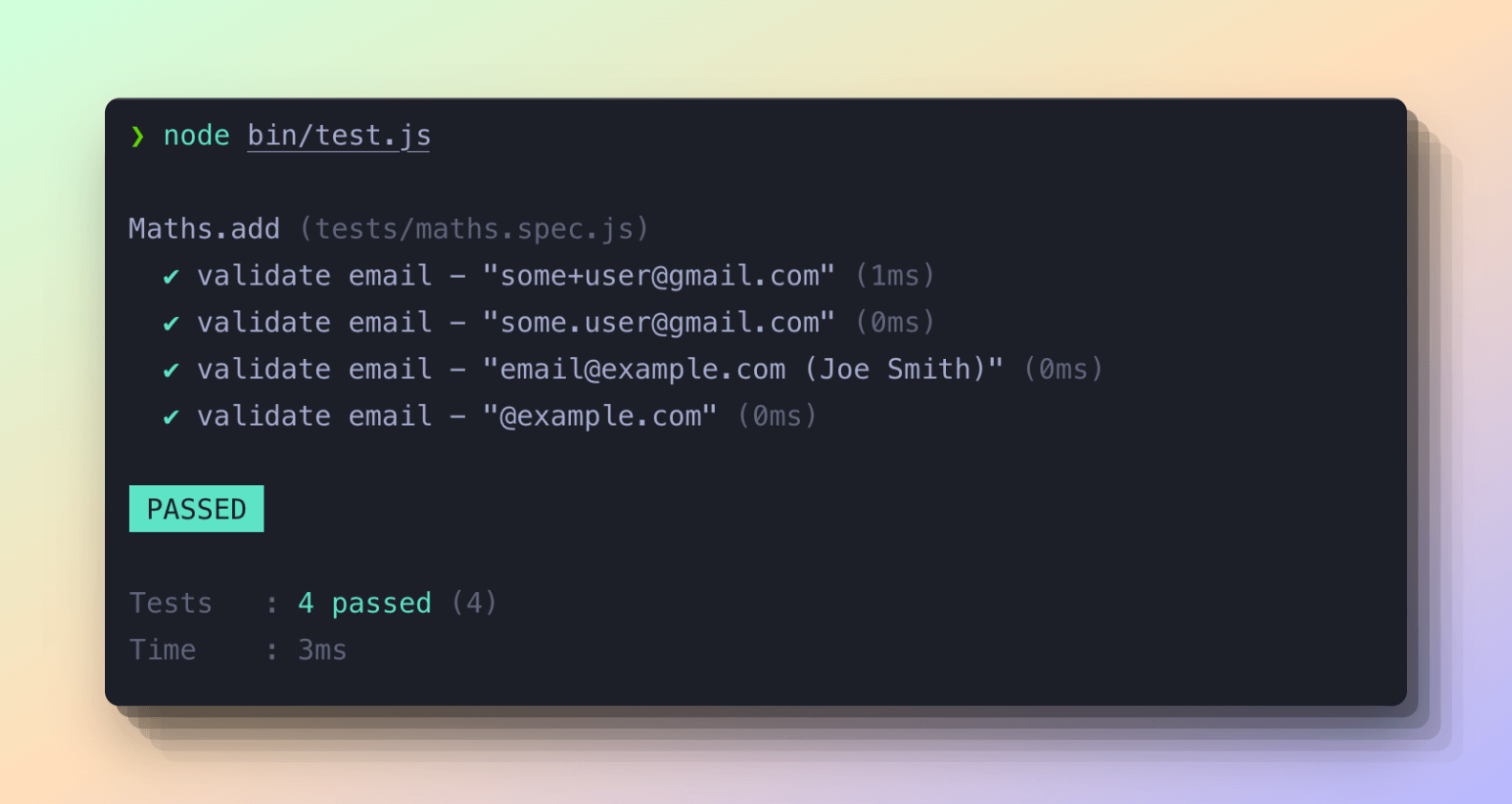Datasets
Datasets allow you to run a specific test multiple times with different data every time.
Datasets are usually helpful when testing a piece of code against varying values. For example: Testing the email validation function against different email formats.
You can define datasets using the with method. It accepts an array of values and passes each row to the test callback function as the second argument.
test('validate email', ({ assert }, email) => {
assert.isTrue(validateEmail(email))
})
.with([
'some+user@gmail.com',
'some.user@gmail.com',
'email@123.123.123.123'
])
The dataset array can have objects as well. Continuing with the validate email example, let's pass some valid and invalid email addresses as a dataset.
test('validate email', ({ assert }, row) => {
assert.equal(validateEmail(row.email), row.outcome)
})
.with([
{
email: 'some+user@gmail.com',
outcome: true,
},
{
email: 'some.user@gmail.com',
outcome: true,
},
{
email: 'email@example.com (Joe Smith)',
outcome: false,
},
{
email: '@example.com',
outcome: false,
}
])
Lazily generate datasets
You may wish to fetch datasets asynchronously from a file or maybe from a database. In that case, you can provide a function that returns an array.
test('validate email', ({ assert }, email) => {
assert.isTrue(validateEmail(email))
})
.with(async () => {
return getEmailsToTest()
})
TypeScript intellisense
Using Japa in a TypeScript project will show you the compiler error when accessing the dataset row inside the test callback.
It happens because TypeScript has no way to know about the second argument your test callback is trying to access.
test('validate email', ({ assert }, email) => {
// TypeScript 🗣 ˄ How do I know what is this?
})
Instead, you can move the test callback to the run method and call the with method before it.
test('validate email')
.with([
'some+user@gmail.com',
'some.user@gmail.com',
'email@123.123.123.123'
])
.run(({ assert }, email) => {
assert.isTrue(validateEmail(email))
})
The above approach has a couple of benefits.
- TypeScript can properly infer the data type of the
withmethod and use it to type-check the test callback. - The test visually reads better. with(dataset).run(thisFunction).
Dynamic title for each test
You can make use the interpolation to display values from the dataset within the test title. This is usually helpful to have a visual indicator for which row inside the dataset is getting tested.
Let's continue with the existing email example and tweak the title as follows.
test('validate email - "{email}"')
.with([
// ...rows
])
.run(({ assert }, row) => {
assert.equal(validateEmail(row.email), row.outcome)
})

The dynamic values (aka interpolation) works by wrapping the property name inside single curly braces {email}.
-
You can access the array current index using the special keyword
$i. The index starts from 1 and not 0.test('{$i} validate email - "{email}"') -
If the dataset array contains only literal values, then you can access them using the special keyword
$self.test('validate email - "{$self}"').with(['some+user@gmail.com','some.user@gmail.com','email@123.123.123.123'])
